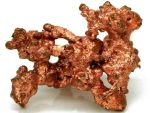Cazaly Resources is on the cusp of adding the Abenab North licence in Namibia to its portfolio after receiving notification from the Ministry of Mines and Energy of its plans to grant the licence.
The explorer previously submitted an application for the new exclusive Abenab North prospecting licence, which Cazaly says is prospective for copper, base metals and rare earths.
While the licence has progressed to notification of intention to grant, it is still subject to environmental clearance by the Ministry of Environment and Tourism.
An environmental clearance certificate will be issued once the ministry has approved the Environmental and Social Impact Assessment and an Environmental Management Plan.
The application covers 790km2 in the in the Otavi Mountain Land region of northern Namibia.
Cazaly says the region is a “significant well mineralised base metals province” with historic production from several operations including Tsumeb, Kombat, Abenab, and the Berg Aukas mines.
The company adds that Tsumeb is a copper, lead, zinc, silver, germanium, and cadmium mine renowned for its wealth of rare and unusual minerals. It was mined from 1897 to 1996.
Cazaly recently completed first-pass reverse circulation drilling to test a 120km2 lithium target at its Kaoko Project, which is also in Namibia.
A total of 1,318m of drilling was completed across 28 holes to test to determine the concentrations of lithium mineralisation in fresh rock beneath a large surface geochemical anomaly.
Previous surface sampling identified the lithium anomaly, which measures 12km by 10km, at the Ohevanga Prospect.
Cazaly says in its latest September quarter report that the continuity of lithium anomalism between the original 1km surface samples is a strong indication that elevated lithium will be contiguous within the sedimentary units across the entire 12km strike length.
Assays from drilling are expected to enable geological characterisation of the lithium anomaly and provide an indication of the source and strength of mineralisation.
Cazaly is exploring commercial opportunities for its Halls Creek Copper, Zinc and Silver Project in Western Australia.
The project includes the Mount Angelo North volcanogenic massive sulphide (VMS) copper-zinc-silver deposit and the Bommie porphyry copper deposit.
Cazaly says positive Scoping Study results, from AuKing Mining’s Koongie Park Copper-Zinc Project – which included mineralisation from the company’s 100%-owned Halls Creek and Bommie copper deposits – confirms the potential for a “financially robust, globally competitive operation”
AuKing’s study envisages the project will have an 11-year mine life producing about 110,000 tonnes of copper, 38,000 tonnes of zinc, and 355,000 ounces of silver.
Cazaly’s Mt Angelo North has a resource of 1.72 million tonnes @ 1.4% copper, 1.4% zinc and 12.3 grams per tonne (g/t) silver while Bommie hosts a resource of 95.6 million tonnes @ 0.27% copper.
Meanwhile, Cazaly is also continuing to rationalise its portfolio of projects including assessing a new project and investment opportunities.
Subsequent to the end of the September quarter, the company relinquished the remainder of the tenements within its Ashburton Project in the Pilbara region of Western Australia.
Additionally, drilling is on hold at Cazaly’s Carb Lake Niobium-Rare Earths Project in Ontario, Canada, while it continues talks with the local First Nations community.
“The company is committed to working towards engaging with the Chief and community to determine when the program can recommence,” Cazaly says.
The Carb Project is located in the Red Lake District, a well-known mining province, and comprises 93 mineral claims covering a more than 3km diameter carbonatite complex.
Field work conducted by Cazaly since acquisition in June 2023 has confirmed the carbonatite has the potential to host economic niobium and rare earth mineralisation.
Drilling approvals were received at the end of the previous quarter for about 1,200m of drilling to provide better characterisation of the distribution of niobium and rare earth mineralisation.










